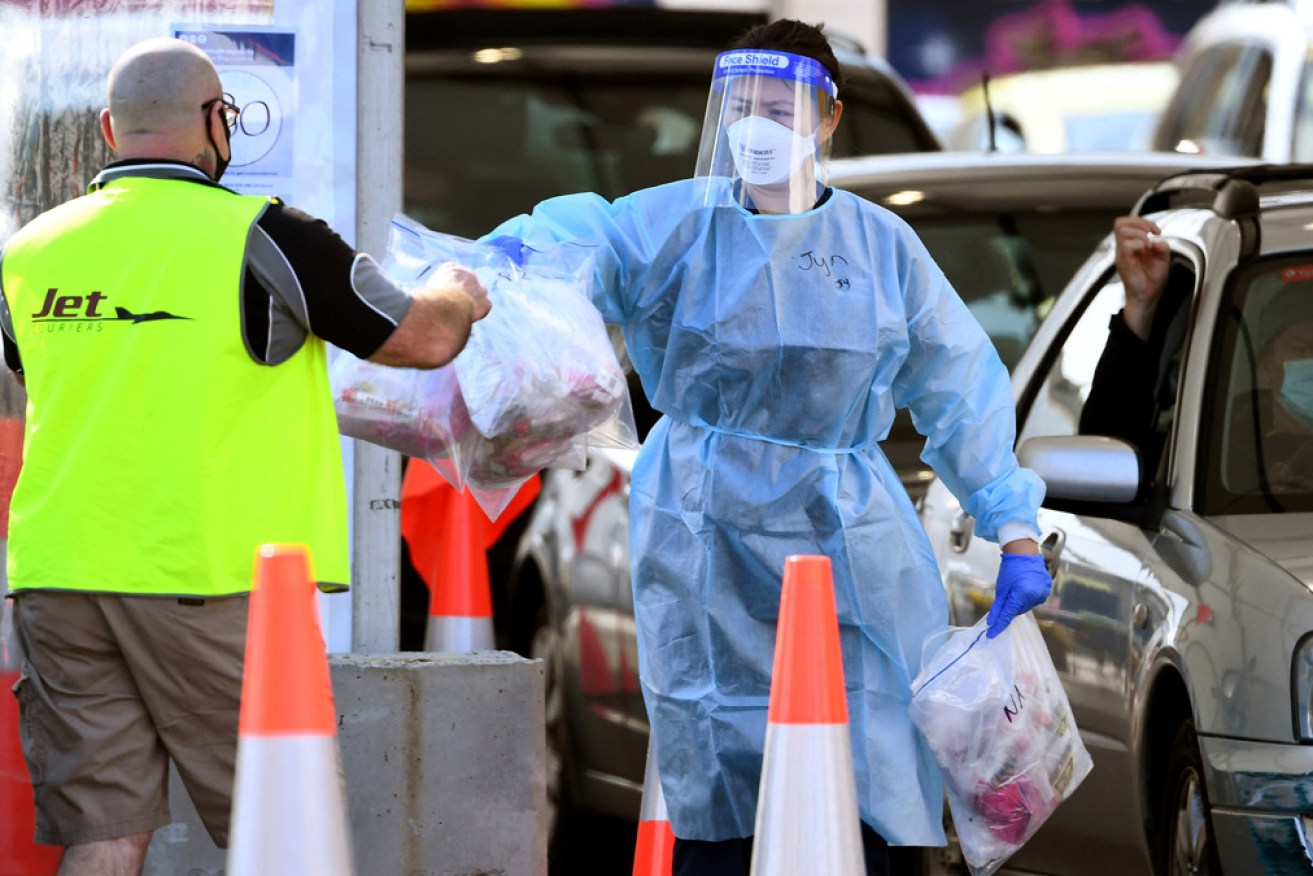NSW’s ‘degraded’ contact tracing puts Australia’s plan to reopen in jeopardy, experts warn


Experts fear NSW's contact tracing system is overwhelmed. Photo: AAP
New South Wales has lost control of contact tracing, putting Australia’s plan to reopen in jeopardy if the state cannot get COVID case numbers under control, infectious disease experts have warned.
NSW Health announced Friday it would no longer report the number of linked and unlinked COVID-19 cases and their isolation status.
“With current case volumes, this data is not a meaningful representation of case investigations,” the government body said.
NSW’s overwhelmed contact tracing system puts Australia in a precarious position, warned infectious diseases expert Allan Saul, a senior research fellow at the Burnet Institute.
The Doherty Institute modelling, which underpins national cabinet’s four-phase plan for reopening Australia, relies on exceptionally good contact tracing, Professor Saul said.
The announcement by NSW Health to not include the number of unlinked cases “implies contact tracing is not working well,” he said.
The Doherty Institute modelling shows that with just a 12 per cent dip in “optimal” contact tracing Australian cities would need a Melbourne-styled ‘stage four’ lockdown to gain control of any outbreak.
“I think the contact tracing in Sydney has degraded much more than 12 per cent,” Professor Saul said.
National cabinet’s plan in limbo
NSW’s ongoing Delta outbreak threatens to derail national cabinet’s four-stage plan, which was agreed upon by all states and territories.
The plan involves the easing of restrictions, most notably lockdowns, when the national vaccination rate reaches 70 to 80 per cent of Australians over the age of 16.
Vaccinating 70 per cent of everyone over 16 equates to vaccinating 56 per cent of the total Australian population.
The premiers of Queensland and Western Australia have both expressed concern there are currently too many cases in the community to open borders in line with national cabinet’s plan.
The Australian Technical Advisory Group on Immunisation (ATAGI) this week recommended the use of the Pfizer vaccine for kids aged 12-15 years.
The danger of reopening too soon
To reopen Australia with cases in the hundreds each day would be setting the nation up for horror scenes, Professor Saul said.
“We don’t need models, we can see it around the world. On Thursday, the United Kingdom had 38,000 cases of COVID-19, 1000 hospital emissions and 140 deaths,” he said.
There are effectively two scenarios for managing COVID: one where there is no community transmission and the other where there is transmission on the scale seen in the UK, Professor Saul said.
He said the challenge for Australia was to get case numbers down and get the population vaccinated – not merely at the government’s current targets of 70 and 80 per cent of the population aged 16+, but as high as possible.
“If you have high levels of vaccination and your contact tracing is working really well, it’s easy to get rid of the cases,” Professor Saul said.
High levels of vaccination mean it’s “going to be much easier to get rid of the rare intrusion of COVID”, he said.
First, we need to get daily COVID case numbers back down to near zero, Professor Saul said.
To do that we need good compliance and vaccines in arms.
“Be patient. Comply. If you see your neighbours doing something stupid, have a kind word to them and get vaccinated,” he said.
“Otherwise, the nightmare scenario will come loose. We can look at Florida, the UK … there’s a number of examples to pick from.”
A ray of hope: Delta spread slows in Sydney
Adrian Esterman, an epidemiologist and biostatistician at the University of South Australia, said the spread of the Delta variant was slowing down in Sydney.
“What I’m seeing at the moment is the rate of growth is slowing down,” Professor Esterman said.
The combination of Sydney’s restrictions and high vaccine rate, with more than 30 per cent of the eligible population fully vaccinated, had started to slow the virus down, he said.
“Although we’re seeing more each day, the speed is slowing. We’re getting a better reproduction number,” Professor Esterman explained.
“I think by the end of the year, we will be out of lockdowns. We’ll have a high proportion of the whole population vaccinated.”








